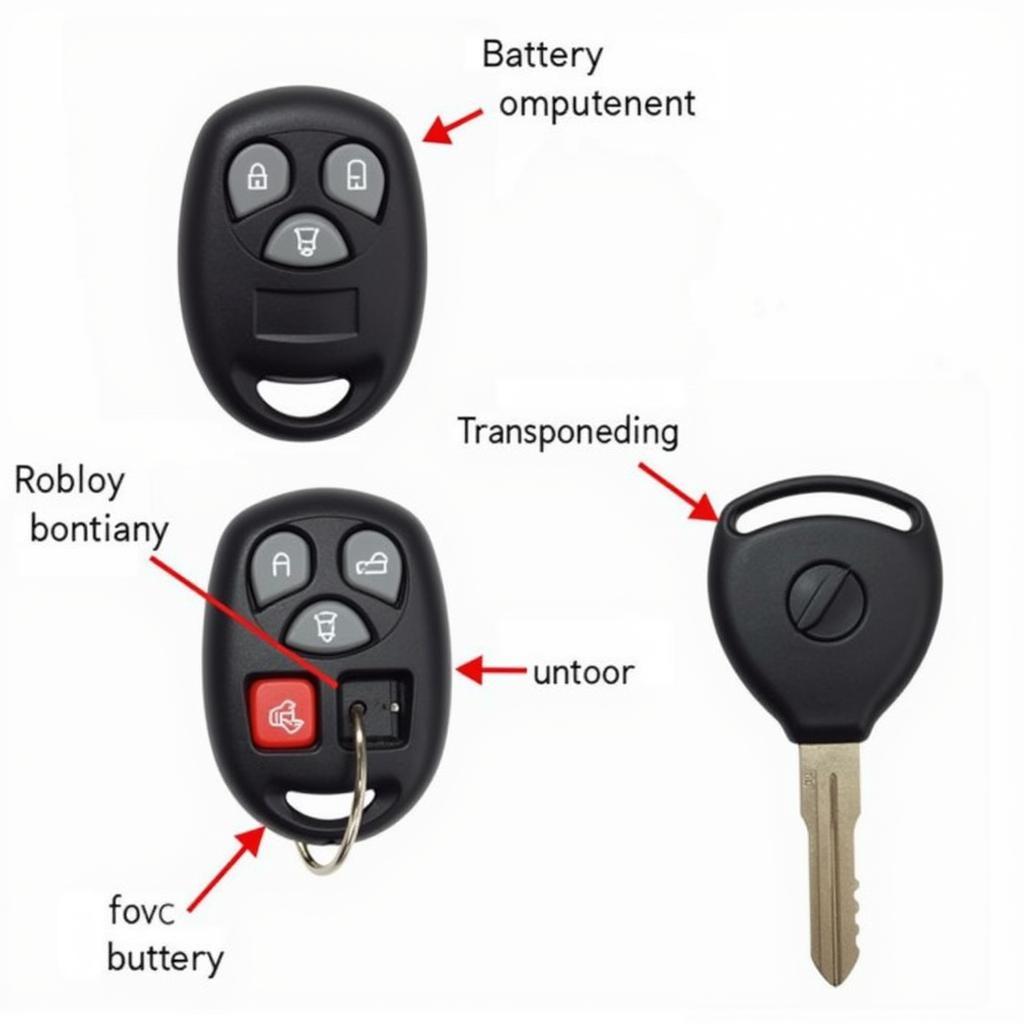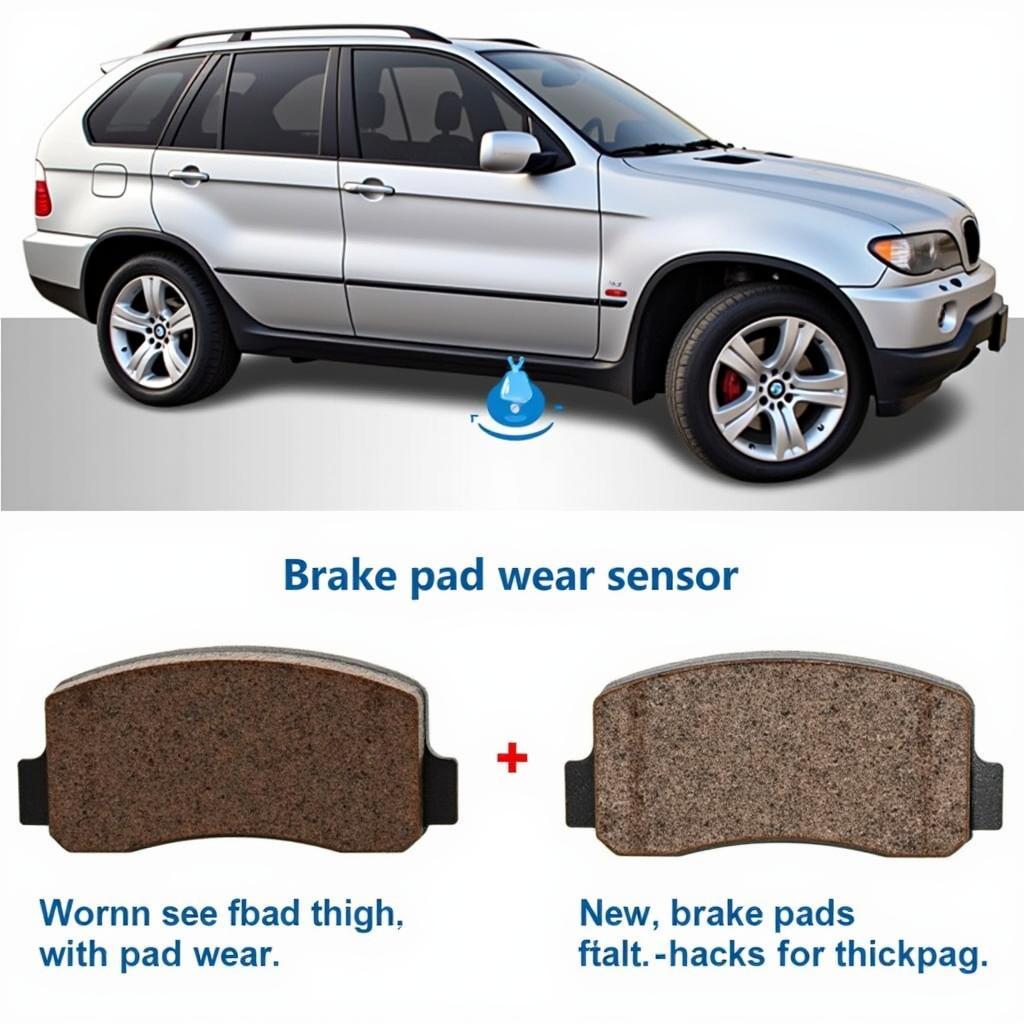Experiencing issues with your GM anti-theft system? You’re not alone. This problem is a common source of frustration for car owners, often leading to unexpected headaches like a vehicle that won’t start. This comprehensive guide will walk you through the potential causes, symptoms, and solutions to help you regain control of your vehicle.
Understanding the GM Anti-Theft System
Before we delve into the solutions, it’s important to understand what we’re dealing with. The GM anti-theft system, also known as PassKey or VATS (Vehicle Anti-Theft System), is designed to deter theft by preventing the engine from starting without the correct key. When the system malfunctions, it can prevent you, the rightful owner, from starting your car.
Common Causes of GM Anti-Theft System Issues
Several factors can trigger problems with your GM anti-theft system. Here are some common culprits:
- Weak or Dead Car Battery: A weak battery is often the root cause of many electrical gremlins, including anti-theft system issues.
- Faulty Ignition Switch: The ignition switch is responsible for reading the signal from your key. If it’s malfunctioning, it may not communicate correctly with the anti-theft system.
- Damaged or Corroded Wiring: Corrosion or damage to the wiring connected to the anti-theft system can disrupt the flow of signals.
- Malfunctioning Key Fob: Issues with the key fob’s battery or internal components can also trigger anti-theft system problems.
Identifying a GM Anti-Theft System Problem
Recognizing the telltale signs of a faulty anti-theft system can save you time and potential misdiagnoses. Keep an eye out for these symptoms:
- Security Light Flashing: A flashing security light on your dashboard is a primary indicator of an anti-theft system issue.
- Engine Cranks but Won’t Start: If you hear the engine cranking but it refuses to start, the anti-theft system might be preventing ignition.
- “Security” or “Theft” Message on Dash: Some vehicles provide more explicit warnings, displaying messages like “Security” or “Theft” on the instrument panel.
Tools and Equipment for Troubleshooting
Before you begin, gather the following tools to effectively troubleshoot your GM anti-theft system:
- OBD-II Scanner: An OBD-II scanner is crucial for reading and understanding the error codes stored in your vehicle’s computer.
- Basic Hand Tools: A set of basic hand tools, including a screwdriver and wrench, can be helpful for accessing certain components.
- Digital Multimeter (Optional): A digital multimeter can be useful for testing the battery voltage and checking for continuity in wiring.
How to Reset a GM Anti-Theft System
While permanently disabling the anti-theft system is not recommended due to security risks, resetting the system can often resolve temporary glitches. Here’s how:
Method 1: The 30-Minute Learn Procedure:
- Attempt to Start: Try starting your vehicle as you normally would. When it fails to start, turn the ignition to the “ON” position (do not start the engine) and leave it for 10 minutes. You’ll notice the security light stays illuminated.
- Cycle the Ignition: After 10 minutes, turn the ignition to the “OFF” position for 5 seconds, then back to the “ON” position for another 10 minutes. Repeat this cycle two more times.
- Successful Reset: If the security light turns off after the third cycle, the system has been reset, and your vehicle should start.
Method 2: Using an OBD-II Scanner:
- Connect the Scanner: Connect your OBD-II scanner to the vehicle’s diagnostic port, usually located under the dashboard on the driver’s side.
- Read and Clear Codes: Turn the ignition to the “ON” position. Using the scanner, read any stored error codes related to the anti-theft system. Once you’ve noted the codes, clear them using the scanner.
- Verify Reset: After clearing the codes, try starting your vehicle. If the issue was a temporary glitch, the system should be reset, and your vehicle should start.
Frequently Asked Questions
Q: Can I disable the GM anti-theft system myself?
While it’s technically possible to bypass components of the anti-theft system, it’s highly discouraged. Tampering with the system can create security vulnerabilities and may void your vehicle’s warranty.
Q: What if the anti-theft light stays on?
If the security light remains illuminated or the system doesn’t reset after attempting these solutions, it indicates a more persistent problem that requires professional attention.
Q: Do I need specialized software to diagnose anti-theft issues?
While basic OBD-II scanners can read and clear some codes, accessing and diagnosing more complex issues within the anti-theft system might require specialized automotive diagnostic software. Consider products like those offered by Cardiagtech for comprehensive diagnostic capabilities.
Q: Can a bad ignition switch cause anti-theft problems?
Absolutely. A malfunctioning ignition switch might not read the key’s resistor value correctly, leading the anti-theft system to believe the wrong key is being used.
Q: How much does it cost to fix a GM anti-theft system issue?
The cost of repair varies widely depending on the root cause. Simple fixes like battery replacement or wiring repairs might be relatively inexpensive. However, more complex issues requiring module replacements or specialized programming can be significantly more costly.
Need Expert Help With Your GM Anti-Theft System?
Troubleshooting your vehicle’s anti-theft system can be a complex endeavor. Remember, attempting to permanently disable the system is strongly discouraged for safety and security reasons. For reliable solutions and expert assistance, connect with Cardiagtech. We provide cutting-edge diagnostic tools and software, along with expert guidance to help you overcome your car troubles.
“When it comes to intricate vehicle systems like the PassKey system, having the right tools and expertise makes all the difference. Don’t let a faulty anti-theft system keep you sidelined.” – [Fictional Expert Name], Automotive Electrician and Author of [Fictional Book Title]



